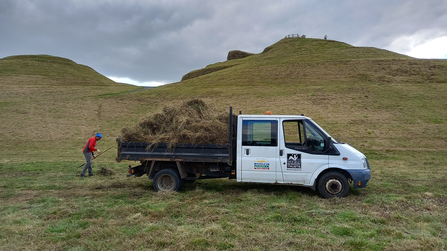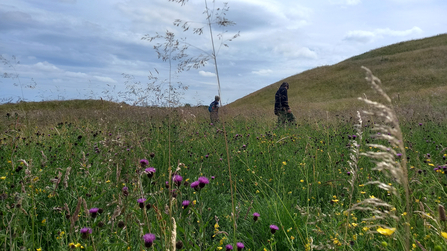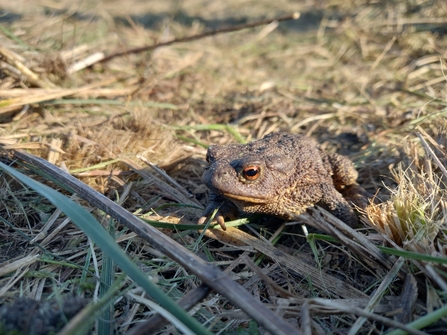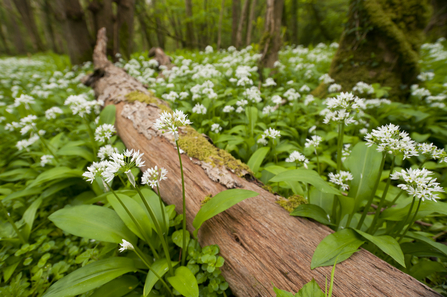
Lady of the North gets a haircut. Image by: Rob Drummond.

Lady of the North gets a haircut. Image by: Rob Drummond.
For, staff and volunteers from Northumberland Wildlife Trust have spent the month ensuring Northumberlandia, aka The Lady of the North, looks her best for wildlife and visitors to the site next spring.
The grass has been cut on the meadow and composted in the woodland to keep the ground low in nutrients. This will allow for a greater of variety of wildflowers such as orchids, red clover, cowslips and oxeye daisies, growing in the meadow next spring and summer. If the ground were allowed to become nutrient rich, it would enable nettles to become dominant and push the flowers out.

Meadow at Northumberlandia. Image by: Rob Drummond.
Even the Lady of the North suffers from split ends from time to time and has to have a haircut each September to ensure the important grassland habitat thrives - vitally important as the UK has lost 97% of its wildflower meadows since the 1930s.
Some areas around the Blagdon Lane site have been left long to provide winter refuge for bank voles, mice, insects, amphibians, worms, fungi and minibeasts. Northumberlandia is home to five of the UK species of amphibians, which include smooth, palmate and great crested newts as well as frogs and toads.

Toad at Northumberlandia. Image by: Rob Drummond.
New planters have been installed around the Visitor Centre café and filled with pollinator friendly plants such as catmint, wild thyme and marjoram that will bloom just in time for the wildlife charity’s spring programme of events and influx of visitors.
In October, bulbs are due to be planted in the woodland, again, in preparation for next spring when there will be carpets of English bluebells, wood anemone and wild garlic all of which will provide early sources of food for bees and butterflies alongside a burst of colour to greet visitors after the dark winter months.

Wild garlic. Image by: Ross Hoddinott/2020VISION.
Rob Drummond, Northumberland Wildlife Trust Beelines Project Assistant said: “Just because it starts to get cooler and nights get darker earlier, doesn’t mean we stop working, September is actually our busiest time of the year as we get the site ready for next spring.
“A lot of the work is done in September to minimize disruption to wildlife. We allow flowers enough time to die back to ensure bees have had maximum use from them and we avoid disturbance to breeding birds and mammals. None of this work would have been possible without our wonderful volunteers who, throughout the year, turn up to help whatever the weather, to ensure the site looks its best.”